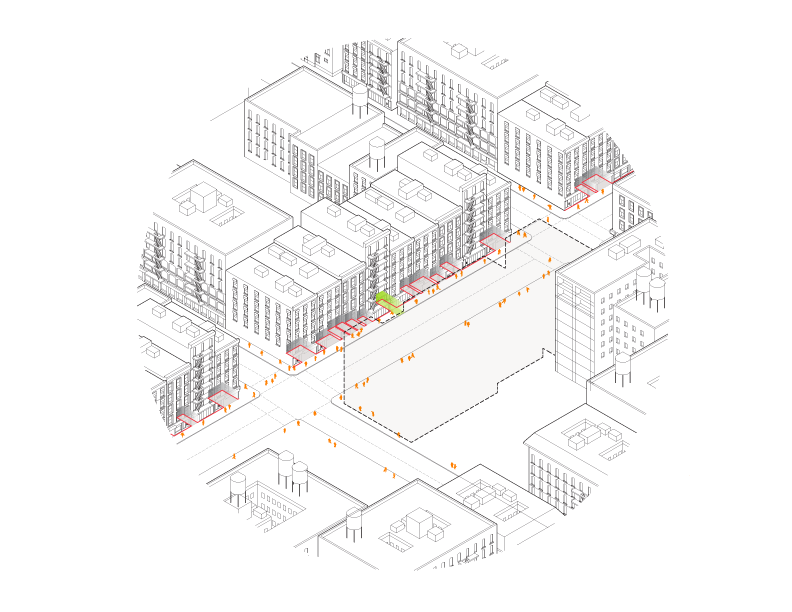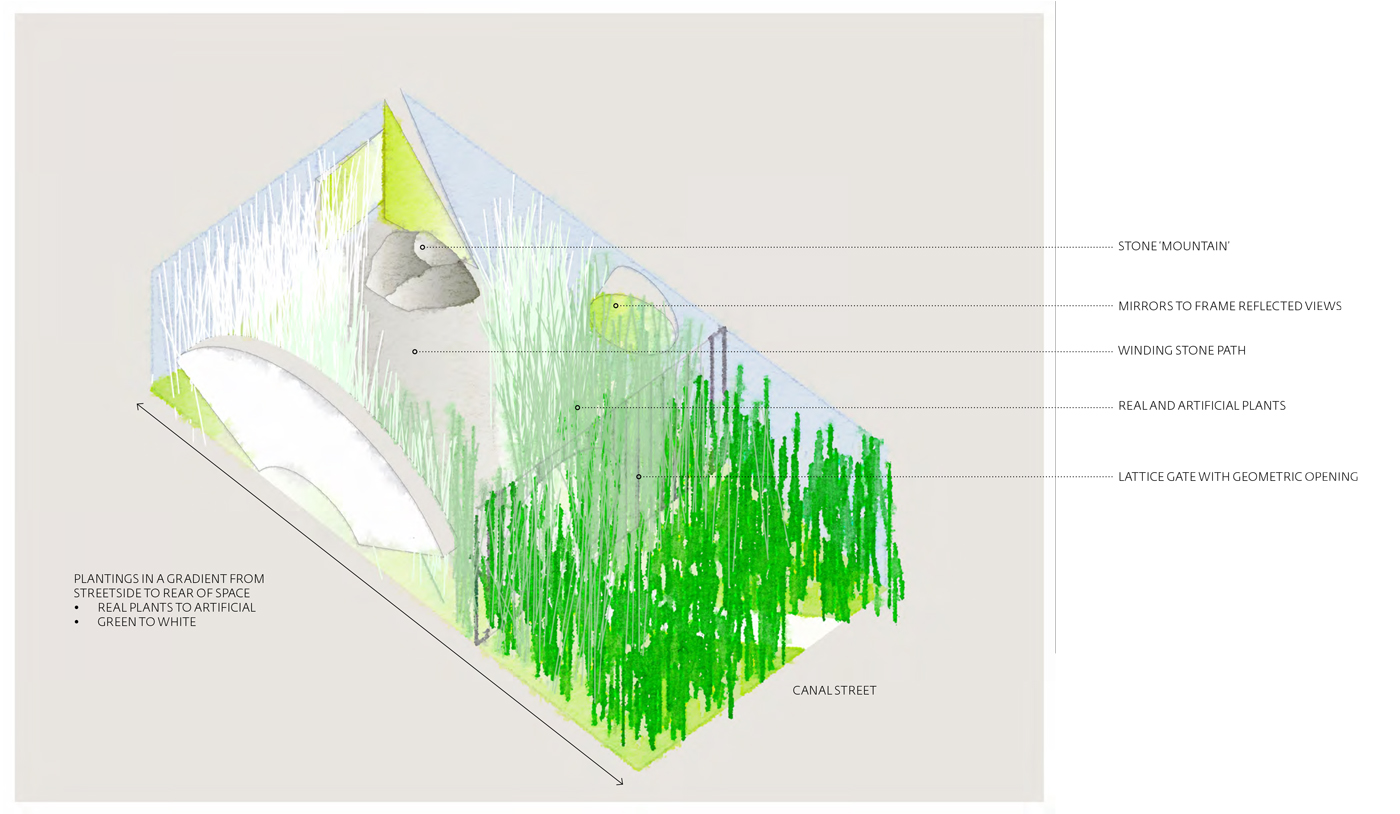
BORROWED SCENERY
Shortlisted for the New York State Council on the Arts Independent Project Grant 2016
Project Team: Can Vu Bui, Lane Rick, James Tenyenhuis
Borrowed Scenery is an architectural intervention in New York City in the tradition of pop-up shops that occupy temporarily vacant storefronts. It intervenes in the bustling economy and unique urban condition of Canal Street by inserting a pop-up garden into a typical retail space. Building on the archetypes of Chinese gardens and cultural themes of Canal Street, Borrowed Scenery uses both real and artificial plant life to construct an unexpected oasis in one of Manhattan’s busiest and most urbanized streets, as well as to examine the qualities of replication, consumerism, and fakeness inherent to Western Chinatowns.
Canal Street is at the epicenter of many colliding systems. Souvenirs, knock-off handbags, and techno gadgets spill out of the tiny shops onto a sidewalk crowded with tourists. The street is jammed up with cross-city traffic and the smell of fish markets and halal street foods. As it runs east, Canal enters Chinatown, where it adopts the Oriental architecture and Chinese signage that compose a typical Chinatown scene. Canal’s infrastructure is ad hoc: storefronts lack enclosure, and between shop turnovers reveal the crude white shell of the space. Without traditional enclosure, inventory spills out of shops and into the crowded street. This messy flexibility defines the very character of Canal Street.
Canal lacks greenspace, and this is what Borrowed Scenery provides: a garden oasis, overflowing with plants instead of Prada bags; a hiccup of contemplation and nature; a fleeting escape from the chaos of Canal Street.
By drawing its visual cues from the traditional Chinese garden, Borrowed Scenery, like the nearby Chinese restaurants and massage parlors, references its Chinese origins, while also adapting to its foreign site. As it responds to its New York City Chinatown context, the garden must navigate a dramatic downshift in scale and limitations of space, light, and local resources. At its core, Borrowed Scenery is made of Chinese objects reappropriated: bamboo latticework, geometric openings, fake mountains, stone paths. As one moves through the space, we encounter real plants that fade into fake ones at the back of the shop, where natural light is insufficient. Mirrors hang on the wall, replacing windows, but still framing adjacent spaces. The narrative journey into the garden, though short, remains the primary organizing act in the space.



